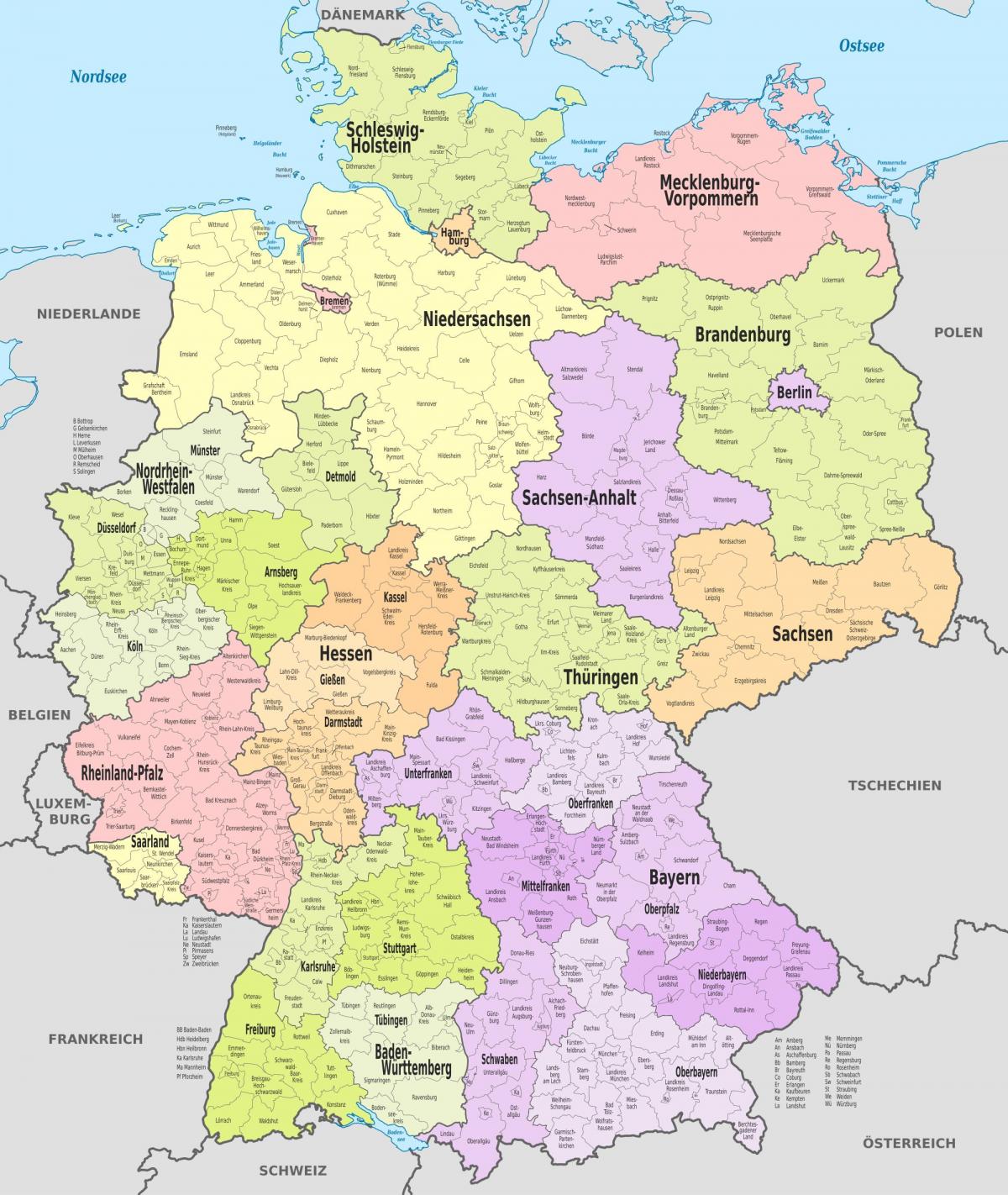search
Germany districts map
Map of Germany district. Germany districts map (Western Europe - Europe) to print. Germany districts map (Western Europe - Europe) to download. The districts of Germany are known as German: Landkreise, except in the states of North Rhine-Westphalia and Schleswig-Holstein where they are known simply as German: ''Kreise'' (singulars: Landkreis and Kreis) as its shown in Germany districts map. The districts are at an intermediate level of administration between the Länder (German states) and the counties or the municipal governments (Gemeinden). They are not to be confused with the larger Regierungsbezirk. They correspond to level 3 administrative units of the Nomenclature of Territorial Units for Statistics (NUTS 3). The title German: "Reichskreis" (Imperial Circle) was given to groups of states in the Holy Roman Empire.
The majority of the districts of Germany are rural districts (Landkreise) of which there are 295. Cities with more than 100,000 inhabitants (and smaller towns in some states) do usually not belong to a district, but take over district responsibilities themselves, similar to the concept of independent cities. These are known as urban districts (Kreisfreie Städte / Stadtkreise)—cities which constitute a district in their own right—and there are currently (2011) 107 of them, bringing the total number of districts to 402 as its mentioned in Germany districts map. In North Rhine-Westphalia, there are some cities with more than 100,000 inhabitants which are not urban districts, for example Recklinghausen, Siegen, Paderborn, Bergisch Gladbach, Neuss and Moers.
The districts of Germany are responsible for the following: According to federal and regional laws as you can see in Germany districts map: The building and upkeep of B roads, Other building plans which cover more than one local authority area, Caring for national parks, Social welfare, Youth welfare, The building and upkeep of hospitals, The building and upkeep of state schools of secondary education, Household waste collection and disposal, Car registration, Electing the Landrat or Landrätin, the chairperson of the district. All these tasks are carried out by local (municipal) authorities operating together. Urban districts have these responsibilities and also those of the municipalities.


